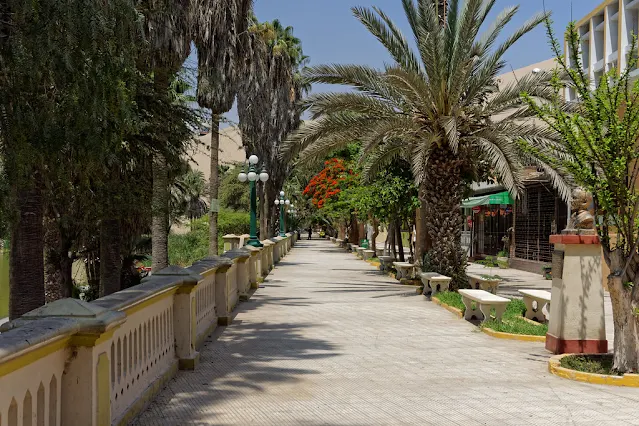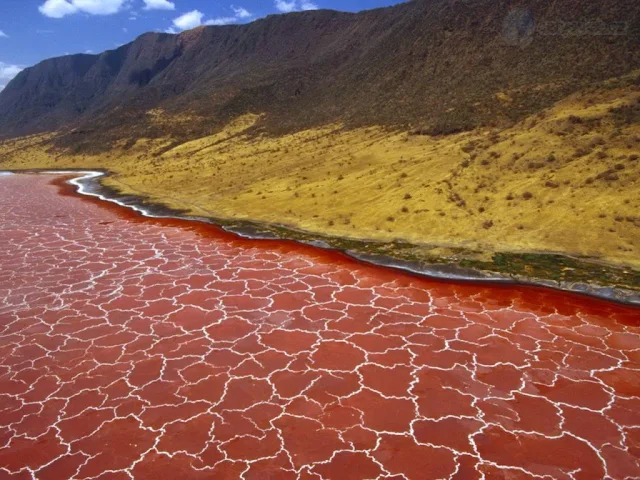Hashima Island commonly called Gunkanjima, is an abandoned island lying about 15 kilometers (9 miles) from the city of Nagasaki, in southern Japan. It is one of 505 uninhabited islands in Nagasaki Prefecture. The island's most notable features are its abandoned concrete buildings, undisturbed except by nature, and the surrounding sea wall. While the island is a symbol of the rapid industrialization of Japan, it is also a reminder of its history as a site of forced labor prior to and during the Second World War.
The 6.3-hectare (16-acre) island was known for its undersea coal mines, established in 1887, which operated during the industrialization of Japan. The island reached a peak population of 5,259 in 1959. In 1974, with the coal reserves nearing depletion, the mine was closed and all of the residents departed soon after, leaving the island effectively abandoned for the following three decades. Interest in the island re-emerged in the 2000s on account of its undisturbed historic ruins, and it gradually became a tourist attraction. Certain collapsed exterior walls have since been restored, and travel to Hashima was re-opened to tourists on April 22, 2009. Increasing interest in the island resulted in an initiative for its protection as a site of industrial heritage.
The island was formally approved as a UNESCOWorld Heritage Site in July 2015, as part of Japan's Sites of Japan's Meiji Industrial Revolution: Iron and Steel, Shipbuilding and Coal Mining.
The 6.3-hectare (16-acre) island was known for its undersea coal mines, established in 1887, which operated during the industrialization of Japan. The island reached a peak population of 5,259 in 1959. In 1974, with the coal reserves nearing depletion, the mine was closed and all of the residents departed soon after, leaving the island effectively abandoned for the following three decades. Interest in the island re-emerged in the 2000s on account of its undisturbed historic ruins, and it gradually became a tourist attraction. Certain collapsed exterior walls have since been restored, and travel to Hashima was re-opened to tourists on April 22, 2009. Increasing interest in the island resulted in an initiative for its protection as a site of industrial heritage.
The island was formally approved as a UNESCOWorld Heritage Site in July 2015, as part of Japan's Sites of Japan's Meiji Industrial Revolution: Iron and Steel, Shipbuilding and Coal Mining.
Coal was first discovered on the island around 1810, and the island was continuously inhabited from 1887 to 1974 as a seabed coal mining facility. Mitsubishi Goshi Kaisha bought the island in 1890 and began extracting coal from undersea mines, while seawalls and land reclamation (which tripled the size of the island were constructed. Four main mine-shafts (reaching up to 1 kilometer deep) were built, with one actually connecting it to a neighbouring island. Between 1891 and 1974 around 15.7 million tons of coal were excavated in mines with temperatures of 30°C and 95% humidity.
In 1916 the company built Japan's first large reinforced concrete building (a 7 floor miner's apartment block), to accommodate their burgeoning ranks of workers. Concrete was specifically used to protect against typhoon destruction. Over the next 55 years, more buildings were constructed, including apartment blocks, a school, kindergarten, hospital, town hall, and a community centre. For entertainment, a clubhouse, cinema, communal bath, swimming pool, rooftop gardens, shops, and a pachinko parlour were built for the miners and their families.
Beginning in the 1930s and until the end of the Second World War, conscripted Korean civilians and Chinese prisoners of war were forced to work under very harsh conditions and brutal treatment at the Mitsubishi facility as forced laborers under Japanese wartime mobilization policies. During this period, it is estimated that about 1,300 of those conscripted laborers died on the island due to various dangers, including underground accidents, exhaustion, and malnutrition.
In 1959, the 6.3-hectare (16-acre) island's population reached its peak of 5,259, with a population density of 835 people per hectare (83,500 people/km2, 216,264 people per square mile) for the whole island, or 1,391 per hectare (139,100 people/km2) for the residential district. As petroleum replaced coal in Japan in the 1960s, coal mines began shutting down across the country, and Hashima's mines were no exception. Mitsubishi officially closed the mine in January 1974, and the island was cleared of inhabitants by April. Today its most notable features are the abandoned and still mostly-intact concrete apartment buildings, the surrounding sea wall, and its distinctive profile shape. The island has been administered as part of Nagasaki city since the merger with the former town of Takashima in 2005. Travel to Hashima was re-opened on April 22, 2009, after 35 years of closure.
In 1916 the company built Japan's first large reinforced concrete building (a 7 floor miner's apartment block), to accommodate their burgeoning ranks of workers. Concrete was specifically used to protect against typhoon destruction. Over the next 55 years, more buildings were constructed, including apartment blocks, a school, kindergarten, hospital, town hall, and a community centre. For entertainment, a clubhouse, cinema, communal bath, swimming pool, rooftop gardens, shops, and a pachinko parlour were built for the miners and their families.
Beginning in the 1930s and until the end of the Second World War, conscripted Korean civilians and Chinese prisoners of war were forced to work under very harsh conditions and brutal treatment at the Mitsubishi facility as forced laborers under Japanese wartime mobilization policies. During this period, it is estimated that about 1,300 of those conscripted laborers died on the island due to various dangers, including underground accidents, exhaustion, and malnutrition.
In 1959, the 6.3-hectare (16-acre) island's population reached its peak of 5,259, with a population density of 835 people per hectare (83,500 people/km2, 216,264 people per square mile) for the whole island, or 1,391 per hectare (139,100 people/km2) for the residential district. As petroleum replaced coal in Japan in the 1960s, coal mines began shutting down across the country, and Hashima's mines were no exception. Mitsubishi officially closed the mine in January 1974, and the island was cleared of inhabitants by April. Today its most notable features are the abandoned and still mostly-intact concrete apartment buildings, the surrounding sea wall, and its distinctive profile shape. The island has been administered as part of Nagasaki city since the merger with the former town of Takashima in 2005. Travel to Hashima was re-opened on April 22, 2009, after 35 years of closure.
The island was owned by Mitsubishi until 2002, when it was voluntarily transferred to Takashima Town. Currently, Nagasaki City, which absorbed Takashima Town in 2005, exercises jurisdiction over the island. On August 23, 2005, landing was permitted by the city hall to journalists only. At the time, Nagasaki City planned the restoration of a pier for tourist landings in April 2008. In addition a visitor walkway 220 meters (722 feet) in length was planned, and entry to unsafe building areas was to be prohibited. Due to the delay in development construction, however, at the end of 2007 the city announced that public access was delayed until spring 2009. Additionally the city encountered safety concerns, arising from the risk of collapse of the buildings on the island due to significant aging.
It was estimated that landing of tourists would only be feasible for fewer than 160 days per year because of the area's harsh weather. For reasons of cost-effectiveness the city considered cancelling plans to extend the visitor walkway further—for an approximate 300 meters (984 feet) toward the eastern part of the island and approximately 190 meters (623 feet) toward the western part of the island after 2009. A small portion of the island was finally reopened for tourism in 2009, but more than 95% of the island is strictly delineated as off-limits during tours. A full reopening of the island would require substantial investment in safety, and detract from the historical state of the aged buildings on the property.
The island is increasingly gaining international attention not only generally for its modern regional heritage, but also for the undisturbed housing complex remnants representative of the period from the Taishō period to the Shōwa period. It has become a frequent subject of discussion among enthusiasts for ruins. Since the abandoned island has not been maintained, several buildings have collapsed mainly due to typhoon damage, and other buildings are in danger of collapse. However, some of the collapsed exterior walls have been restored with concrete.
For more details - Hashima Island



























































